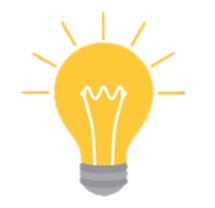Research

Learn about our focus areas:
Decision Modeling
We provide maximum benefit with minimal harm as we deploy tests to the broader population. Examples:
- Develop early detection risk and cost models to understand where early detection tests will have the largest impact.
- Develop cohorts that can be used to deploy our own assays as they are developed.
Risk Stratified Liquid Biopsy
We sensitively and specifically detect differentiating factors in lethal vs. non-lethal disease progression that can be tested via population health approaches. Examples:
- Discover and validate early biomarkers in distal fluids, especially blood.
- Devise sensitive technologies that can detect low levels of single or combinatorial or contingent biomarkers in biofluids.
Mechanisms of Cell State
We discover, understand and describe differentiating factors in lethal vs. non-lethal disease progression, by understanding the mechanism of cell state control in the complex milieu of normal, abnormal and pathogenic environments. Examples:
- Study cell plasticity in early disease progression using multiscale spatial imaging and single cell analysis of epigenetics, RNA, proteins and cell types as well as chromatin state at single cell level. This includes extrinsic factors such as immune repertoire profiling of early diseases and pathogen repertoire profiling.
Precision Therapy
We work on projects in collaboration with the Knight Precision Oncology program.
CEDAR Infrastructure
We develop tools and pipelines that can be used by multiple projects across research programs and are not specific to a single disease.
How We Work
It begins with an idea.

CEDAR project ideas come from anywhere and anyone. In fact, CEDAR researchers themselves determine which ideas are strong enough to put forward. Everyone from graduate students to technicians to senior faculty can lead projects—we value intellectual merit over traditional hierarchy.
Research teams write short project proposals with clear, measurable milestones.

Proposals are evaluated by a review committee—a group of CEDAR leadership and senior scientists with diverse areas of expertise. We only fund projects that meet high standards of scientific rigor, innovation, feasibility, and potential impact on patient lives. Our internal mechanism for funding projects expedites the process of discovery.
Transdisciplinary project teams are formed to advance the idea.

Groups with members from many disciplines maximize learning and creative problem solving. Our research hubs are loosely organized to encourage flexible, transdisciplinary research. Collaboration and diversity are the expectation. We encourage high-risk, high-reward research projects because defeating cancer requires unproven, out-of-the-box thinking.
Milestones are reviewed on a regular basis and revised when necessary.

The science informs our decisions, helping us focus on the practical implementation of our discoveries. When we fail, we can quickly pivot and reorient projects in a more fruitful direction. Recurring milestone reviews ensure that each project is fulfilling its goals.
CEDAR removes the burden on researchers to perform onerous administrative functions.

We don't require them to support themselves through external grants, hire new employees, conduct basic lab operations, or manage equipment ordering and maintenance. This enables our researchers to be laser-focused on achieving our mission of early cancer detection.
Our guiding principles inform everything we do.
They inspire our organizational structure, our research support, and our long-term strategy.
OHSU employees: Interested in funding?
CEDAR offers funding opportunities to advance early cancer detection research. OHSU credentials required.